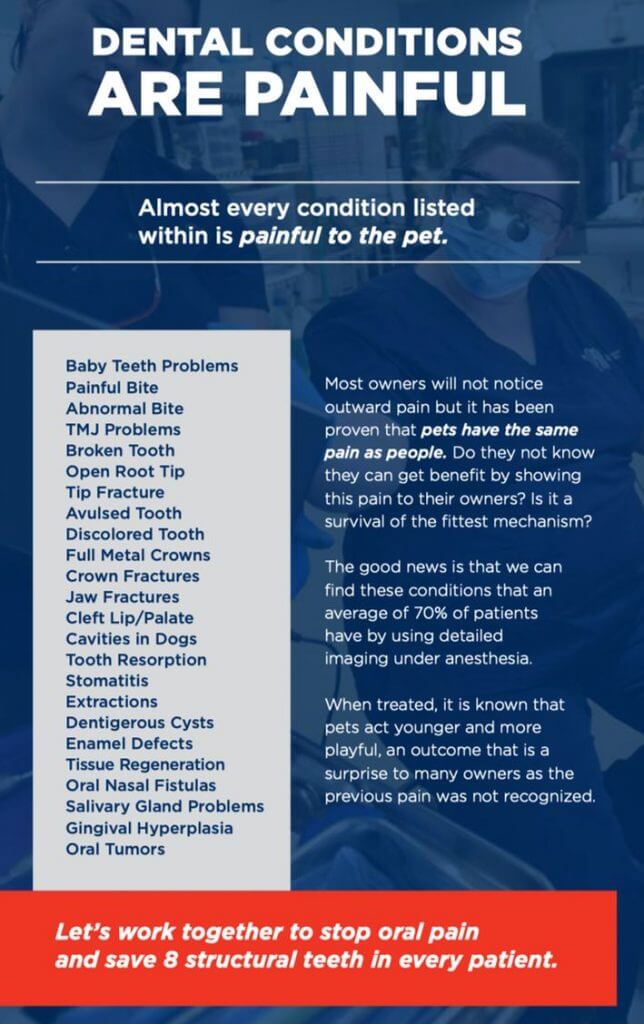Research has shown 87% of dogs by age 3 have dental disease. Cats are likely to be similarly as high as shown in a different study: 69-100% of cats by age 10 had tooth resorption (kitty cavities) on x-rays, but in only 20% of those same cats the veterinarian saw potential problems when awake exams of the mouth were performed. Another research study from over 20 years ago showed dental x-ray findings in dogs and cats 72-86% more than what could be found on exams. Sadly the stats from 20 years ago are still about the same as today.
Dental problems are something every pet has or will have unless prevented. Prevention consists of at least annual professional anesthetic dental procedures and daily or every day home care with VOHC products. (What those are is a whole other blog post.) The point is that although dental conditions are preventable, they are often unseen, forgotten, or overlooked.
Teeth are like icebergs – we can see the crowns/icebergs above the surface, but what lies beneath, is hidden.

Sadly, most dental conditions are painful. Our pets usually don’t show this pain, though it has been shown they have the same pain as people. Some say it’s that they don’t know they it can be made better by showing the pain. Some say it’s a survival of the fittest mechanism. What may be most accurate is calling it functional pain. If you as a person get a toothache or a back problem– do you stop everything? No, you usually work through it—you may go to work while you await your dentist or doctor appointment. You function while you have pain, but it gets treated/resolved appropriately. We need to do that for our pets – treat the problem, by first accurately diagnosing it with dental x-rays under anesthesia. Antibiotics and anti-inflammatory drugs do not fix dental problems, but are sometimes needed during and after correction of a problem.

